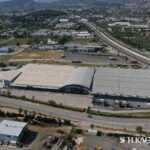The Dubai now cements its position as the world’s number one market of residences of luxury and leaves behind metropolises that until now held the sceptres, such as New York and Hong Kong. According to data from the market research company Knight Frank LLPduring the third quarter of the year in the small but wealthy Persian Gulf country, homes worth $1.59 billion were sold. However, when the total of home sales during the first nine months of the year is calculated, then the firm finds that 277 luxury homes were sold, with the value of sales totaling $4.91 billion and eclipsing comparable purchases in cities renowned for their luxury housing markets.
Speaking to Bloomberg, Mr Faisal Durrani, head of research at Knight Frank, points out that “demand for luxury homes remains high in Dubai and supply is always short of demand.” As he clarifies, the supply for more luxurious villas remains limited, while the demand for luxury villas in front of the sea is currently increasing and it is expected that it will continue to grow. He underlines, in fact, that the rise in prices in this market is surprising, since it continues and escalates for nine consecutive quarters. Dubai’s real estate market has seen unprecedented growth thanks to its government’s handling of the pandemic and its relaxed visa policy, which has attracted many foreigners to the country. In particular, demand has soared for the most luxurious mansions, such as those located in front of the sea on Dubai’s man-made islands, as ultra-wealthy investors and Russians trying to guard their assets flock there, as well as cryptocurrency millionaires and wealthy Indians who need a second home.

This small Middle Eastern country is, however, known for its successive and sudden episodes of rise and fall. real estate market. One of the most dramatic episodes of decline was in 2008, when a debt crisis in the real estate market drove some of the country’s contractors to the brink of bankruptcy. During this boom period, however, contractors try to protect their interests by demanding a large portion of the payments for the properties before they even begin construction. This implies, of course, greater risk-taking on the part of wealthy homebuyers, who pay large sums upfront.
As Knight Frank points out in its relevant report, more than half of the sales of villas were on the artificial island of Palm Jumeirah, which has the shape of a tree. There, in the Emirates Hills and Jumeirah Bay districts, property prices have risen by 16% compared to last year. In the more traditional area of Umm Suqeim 3 and in the shadow of the famous Burj Al Arab hotel, demand is also very high and villa prices are 62% higher than those prevailing in the competing Business Bay area. And as Knight Frank points out, most sales in the area are for cash, and the variety of different people flocking to buy its properties is remarkable.




